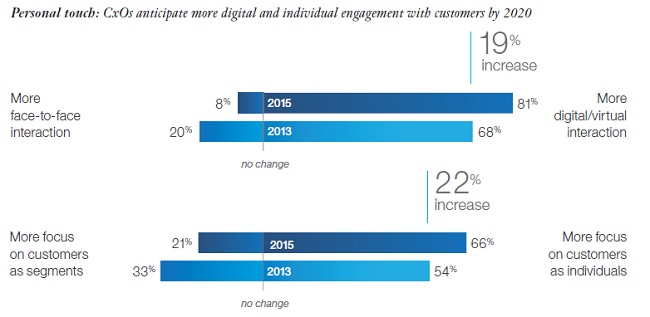The C-suite and the Uber fear factor: IBM study
By Digital News Asia November 11, 2015
- C-level executives see ‘uberisation’ as primary competitive threat
- Highest-performing companies 24% more likely to focus on cognitive computing

THE ‘uberisation’ trend, or industry disruption caused by an unlikely competitor, has become a dominant concern of the C-suite, a new IBM study found.
In just two years, the percentage of C-suite leaders who expect to contend with competition from outside their industry increased by more than a quarter, rising from 43% in 2013 to 54% today, IBM said in a statement.
The IBM study, Redefining Boundaries: Insights from the Global C-suite Study, is based on findings from more than 5,200 CEOs, CMOs, CFOs, CIOs and other C-suite leaders across 21 industries in more than 70 countries.
The respondents – most of whom participated in face-to-face interviews – represent a wide range of public and private enterprises, IBM said.
Conducted by IBM’s Institute for Business Value, the report reveals that CxOs now expect industry convergence to be the primary force impacting their business in the next three to five years, and that the highest performing enterprises place greater priority on cognitive capabilities than market followers.
“When it comes to the competition, C-suite leaders clearly have a new threat to consider – one that is often invisible until it is too late,” said Bridget van Kralingen, senior vice president, IBM Global Business Services.
“At the same time, the highest performers see advances in areas like cognitive computing and systems that can sense and learn as the key to dealing with disruptive events, showing a path forward for all executives,” she added.
C-suite leaders from the highest performing companies are 24% more likely to be focused on cognitive computing, IBM said.
The study recommends enterprises use predictive and cognitive analytics to help forecast what might happen with a greater level of confidence and get ahead of unseen competitors.
Beware unwelcome intruders

The biggest risk to businesses used to be a new rival with a better or cheaper offering, making it relatively simple to alter strategies.
Today, entrenched players are being threatened by new entrants with completely different business models, as well as smaller, more agile players unencumbered by legacy infrastructure.
About 48% of CxOs acknowledge the need for more decentralised decision-making, 54% are looking to bring innovation in from outside sources, and 70% plan to expand their partner network.
Implement customer feedback, don’t just ask for it
Many CxOs interviewed freely admitted that they find it hard to see what’s coming next. Yet, when it comes to identifying and exploring new trends and technologies, only half of respondents are utilising customer feedback.
This despite the fact that in IBM’s 2013 Global C-suite Study, 60% of CEOs said they planned to directly engage their customers and proactively apply what they learned to set their business agendas.
Two years later, it’s still a gap waiting to be closed, IBM said.
Most CxOs anticipate changing the way their organizations engage with customers: 66% expect to focus on customers as individuals – up 22 points from 2013 – and 81% plan to drive more digital interaction, a 19-point increase from two years ago.

Role and risks of technology
CEOs put technology at the top of the list of external forces buffeting their organisations for the past three IBV C-suite studies.
Now, for the first time, all C-suite executives – regardless of role – identify technology as the most important external force impacting their enterprise.
CxOs believe cloud computing, mobile solutions, the Internet of Things and cognitive computing are the technologies most likely to revolutionise their business.
When it comes to risks, two years ago IT security ranked low on the list of concerns. Now, 68% of respondents rank IT security as the No 1 enterprise risk.
Related Stories:
Digital disrupters twice more profitable: CA Tech survey
Four key takeaways from What’s Next 2015
The 6 laws of digital transformation, according to SingPost
What’s Next: Think about zero, or become irrelevant
Robots and AI: Gartner’s top tech predictions for 2016, and beyond
For more technology news and the latest updates, follow us on Twitter, LinkedIn or Like us on Facebook.


